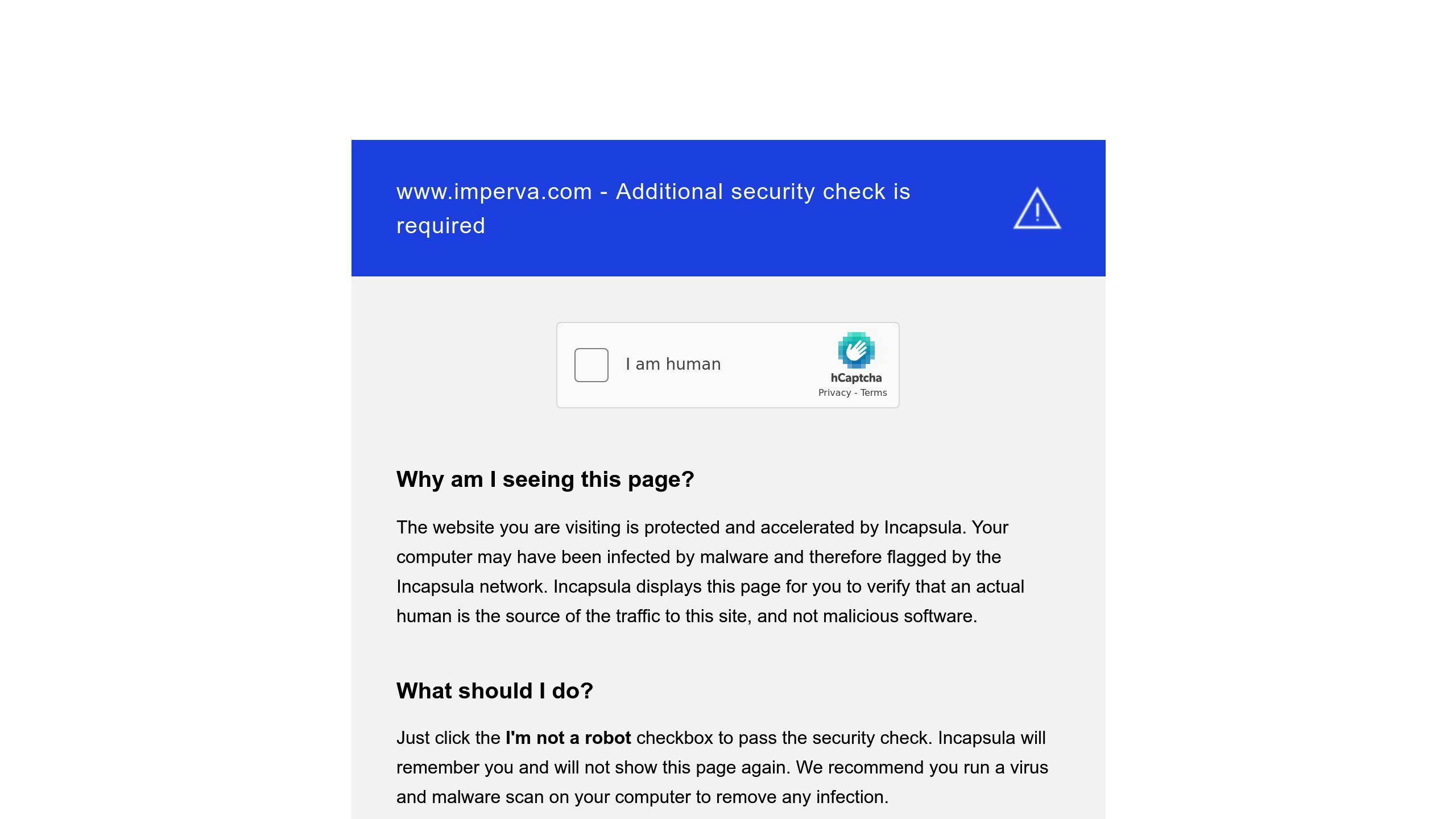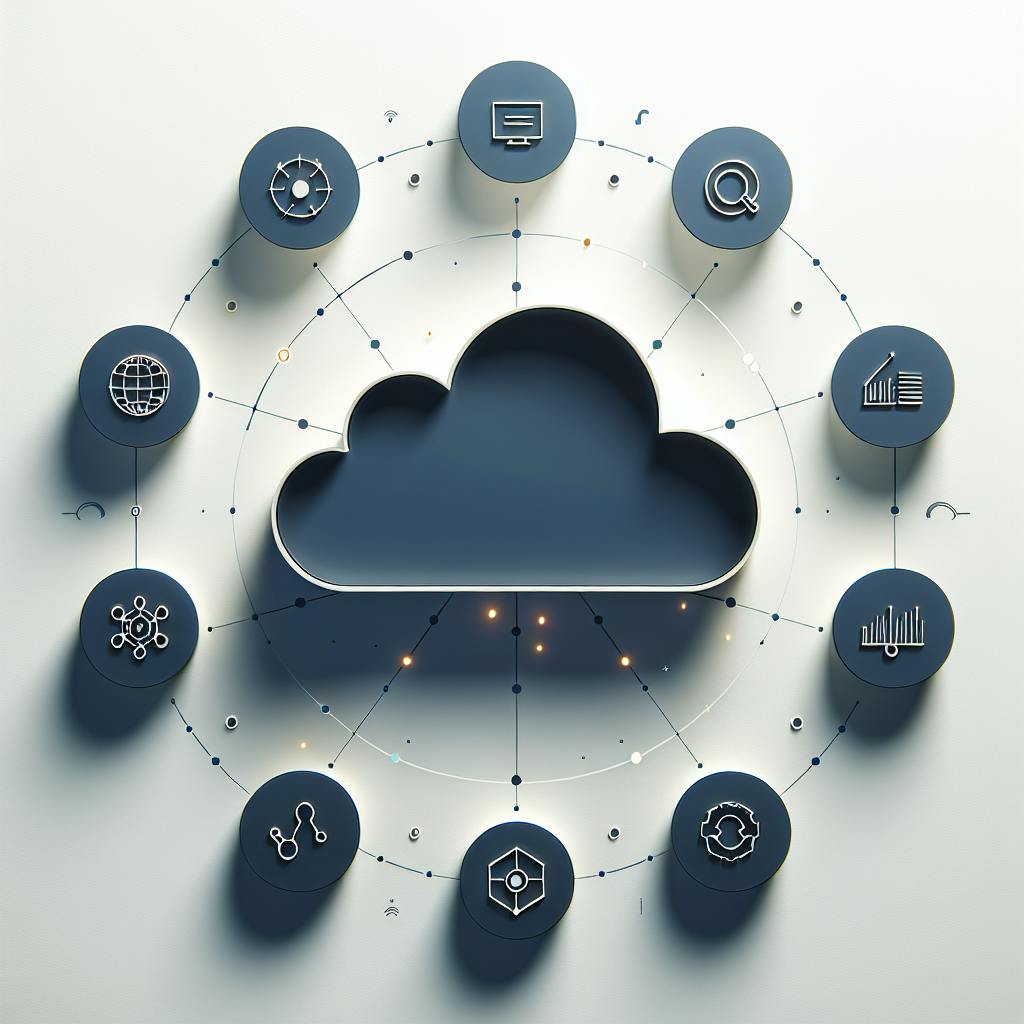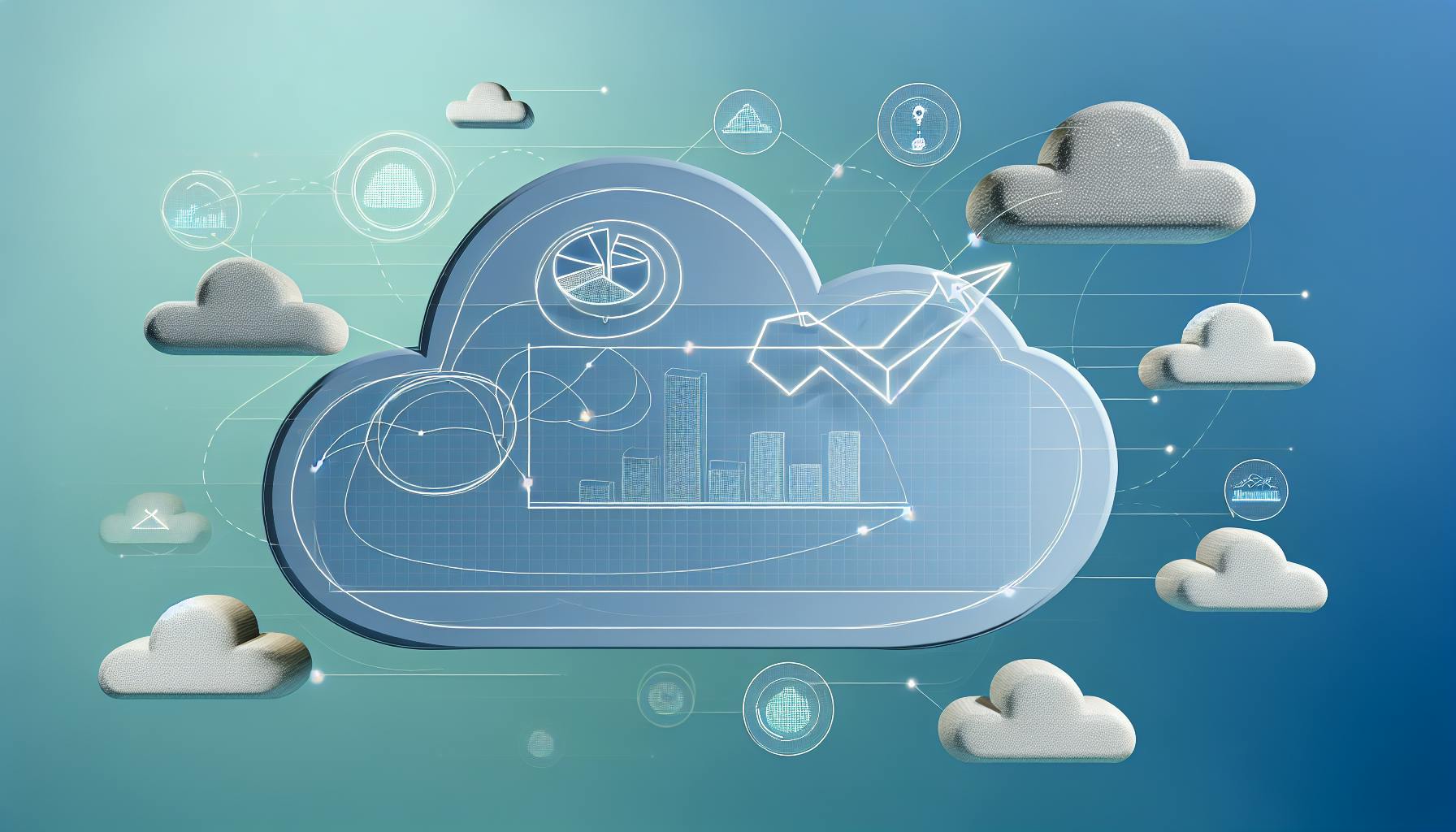Need to get your MDM system SOC 2 compliant? Here's what you need to know:
- MDM (Mobile Device Management) helps manage and secure mobile devices
- SOC 2 is a voluntary standard for handling customer data securely
- MDM plays a crucial role in meeting SOC 2 requirements
Key points:
- SOC 2 focuses on 5 trust criteria: Security, Availability, Processing Integrity, Confidentiality, and Privacy
- MDM features like encryption, remote wipe, and access control directly support SOC 2 compliance
- To achieve compliance, implement strong MDM policies and choose the right tools
- Regular audits and ongoing monitoring are essential to maintain compliance
Quick Comparison of MDM Platforms for SOC 2:
| Feature | DuploCloud | Vanta | SecureFrame | Drata | Laika |
|---|---|---|---|---|---|
| Built-in SOC 2 compliance | Yes | Yes | Yes | Yes | Yes |
| Continuous monitoring | No | Yes | Yes | Yes | Yes |
| Custom controls | No | No | No | Yes | No |
| Onboarding/offboarding automation | No | Yes | No | No | No |
| In-app audit automation | No | No | No | No | Yes |
Remember: SOC 2 compliance is an ongoing process. Stay informed about updates, conduct regular audits, and adapt your MDM strategies to new threats and technologies.
Related video from YouTube
SOC 2 compliance explained

SOC 2 is crucial for companies handling customer data. Here's what you need to know.
SOC 2 definition
SOC 2 is a set of rules from the American Institute of CPAs (AICPA). It's about keeping customer data safe.
Here's the thing: SOC 2 isn't required by law. But many clients expect it. It's like telling them, "We're serious about data security."
5 Trust Services Criteria
SOC 2 focuses on five areas:
- Security: Stopping unauthorized access
- Availability: Keeping systems running
- Processing Integrity: Ensuring accurate, timely data
- Confidentiality: Protecting sensitive info
- Privacy: Handling personal data right
Every SOC 2 report covers security. Companies pick which other areas to include.
SOC 2 Type I vs Type II reports
There are two types of SOC 2 reports:
| Type | Coverage | Timeframe | Best for |
|---|---|---|---|
| Type I | Checks control design | One point in time | New or SOC 2 beginners |
| Type II | Assesses control effectiveness | 3-12 months | Proving ongoing compliance |
Think of Type I as a photo and Type II as a video. Type II shows how a company handles data security over time.
Getting SOC 2 compliant takes time. For mid-sized companies, it's usually 3-12 months. But it's worth it. As cloud business grows, SOC 2 compliance is becoming essential.
How MDM helps with SOC 2
MDM is crucial for SOC 2 compliance. It's not just about device management - it's about data protection and meeting security standards.
MDM's role in SOC 2 compliance
MDM solutions are key for SOC 2 compliance on mobile devices. They help:
- Set up security policies
- Control access to apps and data
- Encrypt information
- Handle lost or stolen devices
These features directly address SOC 2 Trust Services Criteria, especially security and confidentiality.
Key MDM features for SOC 2
Here's how specific MDM features support SOC 2:
| MDM Feature | SOC 2 Benefit |
|---|---|
| Password Management | Stops unauthorized access |
| Data Encryption | Protects sensitive info |
| Remote Wipe | Secures lost device data |
| App Management | Controls corporate data access |
| VPN Configuration | Ensures secure connections |
| Device Enrollment | Sets security from day one |
Scalefusion MDM, for example, lets companies set up mandatory passwords with specific requirements. This supports SOC 2's security principle.
"Scalefusion MDM allows you to make passwords mandatory and define length, complexity, and history."
MDM also helps with SOC 2 privacy. It can separate personal and work data on devices - crucial for BYOD policies.
"You can create separate work and personal profiles with the same device using containerization, which ensures data protection and provides user privacy."
Using these MDM features shows auditors you're serious about protecting client data. It's about building a security culture that SOC 2 demands.
SOC 2 compliance is ongoing. MDM helps by:
- Monitoring device status
- Updating security policies
- Responding to new threats
In short, MDM turns SOC 2 requirements into actionable policies on every device. It bridges the gap between SOC 2 demands and company delivery.
SOC 2 checklist for MDM
Want to make your MDM solution SOC 2 compliant? Here's what you need to do:
Security steps
Lock it down. Use strong passwords and MFA. Encrypt your data (AES-256 is good). Set up VPNs for remote access. For BYOD, use containerization to separate work and personal stuff. And make sure you can lock or wipe devices if they're lost.
Privacy controls
Keep personal and work data separate. Use containers. Be ethical about remote control. Stop data leaks by disabling copy-paste and screenshots. Use role-based access.
Confidentiality measures
Group devices to share sensitive data with the right people. Encrypt everything. Use secure file sharing tools. Set up DLP policies. Keep access permissions up to date.
Ensuring availability
Use load balancers. Have recovery plans. Set up backups. Monitor your system. Know how to respond to incidents.
Data processing integrity
Use role-based security. Check your data. Track changes with audit trails. Test your systems. Manage changes carefully.
Here's how Scalefusion MDM helps with SOC 2:
| MDM Feature | SOC 2 Benefit |
|---|---|
| Password Management | Stops unauthorized access to unattended devices |
| Data Encryption | Protects sensitive info with BitLocker and FileVault |
| BYOD Management | Separates work and personal data |
| Incident Response | Lets you lock or wipe compromised devices remotely |
| Network Security | Sets up VPN for secure access to company info |
MDM policies for SOC 2
Want to meet SOC 2 standards? You need solid Mobile Device Management (MDM) policies. Here's the lowdown:
Device enrollment rules
Getting devices into your MDM system? Follow these steps:
- Get approval first
- Use MFA during setup
- Install security certs on each device
- Set minimum OS versions
Access control methods
Lock it down:
- Use strong passwords (12+ characters, mix it up)
- MFA for everyone
- Set up role-based access
- Check and update permissions regularly
Data encryption practices
Keep your data safe:
- AES-256 for data at rest
- TLS 1.2 or higher for data in motion
- VPNs for remote access
- Separate work and personal data on BYOD
Network security basics
Secure that network:
- Firewalls and intrusion detection
- Segment your network
- Patch and update regularly
- Watch for weird traffic
App management guidelines
Get a grip on your apps:
- Make an approved app list
- Use an enterprise app store
- Update and patch apps
- Ditch unused or old apps
| Policy Area | Key Actions |
|---|---|
| Device Enrollment | Approval, MFA, security certs, OS rules |
| Access Control | Strong passwords, MFA, role-based access, regular checks |
| Data Encryption | AES-256, TLS 1.2+, VPNs, data separation |
| Network Security | Firewalls, segmentation, patching, monitoring |
| App Management | Approved list, enterprise store, updates, removal |
sbb-itb-9890dba
Steps to SOC 2 compliant MDM
Compliance roadmap
- Set goals: Define clear objectives for your SOC 2 compliance efforts.
- Pick Trust Services Criteria: Choose relevant criteria beyond the mandatory Security:
| Criteria | Purpose |
|---|---|
| Security | Guard against unauthorized access |
| Availability | Ensure system uptime |
| Processing Integrity | Handle data accurately |
| Confidentiality | Protect sensitive info |
| Privacy | Handle personal data properly |
- Assess risks: Identify potential threats to your systems and data.
- Analyze gaps: Compare current practices with SOC 2 requirements. Prioritize based on risk.
- Implement controls: Put policies and procedures in place to address gaps.
- Pick an auditor: Choose an experienced CPA for SOC 2 audits.
- Do the audit: Complete a Type 1 (point-in-time) or Type 2 (minimum six-month period) audit.
Tackling common hurdles
- Time crunch: Break the process into smaller tasks.
- Resource issues: Assign a dedicated project manager.
- Too much paperwork: Use MDM software to automate reporting and tracking.
Staying compliant
-
Keep watching: Set up ongoing checks:
- Regular device security scans
- Automated compliance reports
- Real-time policy violation alerts
- Yearly audits: Schedule annual SOC 2 audits.
- Stay in the loop: Keep up with SOC 2 and MDM changes.
- Train your team: Regularly educate staff on SOC 2 and MDM policies.
Audit and reporting basics
Getting ready for a SOC 2 audit
Want to ace your SOC 2 audit? Here's what you need to do:
- Pick your Trust Services Criteria. Security's a must, but you might want to add others.
- Find your weak spots. What could go wrong with your MDM system?
- Set up defenses. Create policies to tackle those risks.
- Find a pro. Get a CPA firm that knows MDM systems inside out.
- Get your paperwork in order. Gather proof that your controls work.
Required documents
You'll need these docs for your audit:
| Document | What it is |
|---|---|
| Management assertion | Your written claim about meeting Trust Services Criteria |
| System description | The lowdown on your company and MDM setup |
| Control matrix | A spreadsheet showing how you meet SOC 2 criteria |
| Security policies | How you keep your MDM system safe |
| Incident response plans | What you do when things go wrong |
| Risk management procedures | How you spot and fix problems |
Ongoing monitoring
SOC 2 isn't a "set it and forget it" deal. To stay compliant:
- Keep an eye on your controls 24/7
- Use tools to make compliance easier
- Check yourself before you wreck yourself (with internal audits)
- Stay up-to-date on SOC 2 changes
- Book your yearly audit with your CPA firm
Choosing MDM tools for SOC 2
Picking the right MDM tools for SOC 2 compliance? Focus on features that nail security, privacy, and confidentiality. Let's break it down.
What to look for in MDM tools
- Platform support: Does it work with your devices?
- Security features: Encryption, remote wipe, password management - got 'em?
- Compliance-specific functions: Built-in SOC 2 features are a plus
- Scalability: Can it grow with you?
- User experience: Easy for IT and employees?
- Reporting: Detailed logs and reports for audits?
Top MDM platforms compared
| Feature | DuploCloud | Vanta | SecureFrame | Drata | Laika |
|---|---|---|---|---|---|
| Built-in SOC 2 compliance | Yes | Yes | Yes | Yes | Yes |
| Continuous monitoring | No | Yes | Yes | Yes | Yes |
| Custom controls | No | No | No | Yes | No |
| Onboarding/offboarding automation | No | Yes | No | No | No |
| In-app audit automation | No | No | No | No | Yes |
| Additional compliance frameworks | HIPAA, PCI-DSS, GDPR | ISO 27001, GDPR | Not specified | Not specified | GDPR, HIPAA |
DuploCloud? End-to-end DevSecOps. Vanta? Employee management pro. SecureFrame and Drata? Strong in continuous monitoring. Drata lets you customize controls. Laika? Good SOC 2 starting point with room to grow.
Your choice depends on your needs. In healthcare? DuploCloud's HIPAA compliance might be key. High employee turnover? Vanta's onboarding/offboarding could be a game-changer.
What's next for MDM compliance
MDM compliance is evolving fast. Here's what's coming and how to prep.
New trends in MDM
AI is entering MDM, speeding up risk detection and streamlining device management.
"Global endpoint security market to hit 16 billion USD in 2024."
This surge highlights smart device management's growing importance.
2. IoT security
More devices = more risks. MDM now covers phones, laptops, smart watches, and IoT gadgets.
3. Zero Trust Architecture
No device or user is safe by default. MDM now requires constant access checks.
Changing compliance rules
SOC 2 is getting an update. AICPA's changes include:
- New Points of Focus per criteria
- Deeper risk assessment details
- Tech and threat updates
MDM systems need to level up to match.
Getting ready for new rules
1. Stay informed
Watch SOC 2 updates. No need to switch immediately, but know what's coming.
2. Review your controls
Does your MDM meet new Points of Focus? Adjust if needed.
3. Boost risk assessment
New SOC 2 emphasizes risk management. Ensure your MDM can handle it.
4. Go cloud-based
Cloud MDM scales better and updates faster. It helps meet new compliance needs.
5. Plan for BYOD and COPE
Companies now use BYOD and COPE. Your MDM must handle both compliantly.
| Model | Meaning | Compliance Challenge |
|---|---|---|
| BYOD | Personal devices for work | Balance privacy and security |
| COPE | Company devices with personal use | Keep work data separate and secure |
Conclusion
SOC 2 compliance and MDM aren't one-and-done tasks. They're ongoing processes that need constant attention. Here's what you need to know:
SOC 2 is all about trust. It covers security, availability, processing integrity, confidentiality, and privacy. MDM? It's your secret weapon for SOC 2 compliance. It locks down the devices that handle your sensitive data.
The MDM world is changing fast. AI, IoT security, and Zero Trust are shaking things up. To stay on top of it all:
1. Keep learning
Stay up-to-date with SOC 2 changes and MDM trends. The tech world moves fast, and you need to keep up.
2. Audit regularly
Do SOC 2 Type 2 audits every year. It's not just about saying you're compliant - you need to prove it.
3. Update your MDM game plan
New threats pop up all the time. Make sure your MDM policies can handle them.
4. Balance security and usability
BYOD or COPE? Both have pros and cons:
| Model | What it is | The challenge |
|---|---|---|
| BYOD | Employees use their own devices | Keeping work and personal stuff separate |
| COPE | Company provides the devices | Letting employees use them for personal stuff (safely) |
5. Automate where you can
Use MDM tools that automate compliance tasks. It'll save you time and cut down on mistakes.
FAQs
Is MDM required for SOC 2?
MDM isn't a must-have for SOC 2, but it's a powerful tool to meet the requirements. Here's why:
MDM manages sensitive data on mobile devices, while SOC 2 demands strong data protection. It's a match made in security heaven.
With MDM, you can:
- Keep data under wraps
- Block unwanted access
- Set up security measures
Picture this: Your company uses MDM to encrypt work emails on phones, wipe lost devices remotely, and control who gets into business apps. That's SOC 2's security and confidentiality criteria in action.
Let's break it down further:
| SOC 2 Criteria | MDM's Role |
|---|---|
| Security | Locks down devices, wipes data if needed |
| Availability | Keeps business apps and data accessible |
| Processing Integrity | Maintains data accuracy across devices |
| Confidentiality | Controls who sees what |
| Privacy | Separates work and personal stuff |
Bottom line? MDM isn't a must, but it makes SOC 2 compliance a whole lot easier, especially if your team is always on the go.



